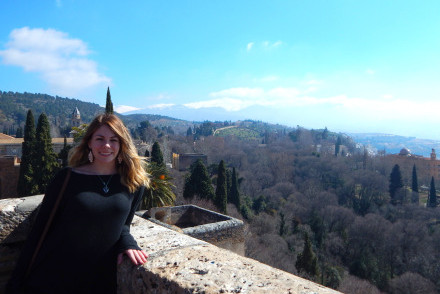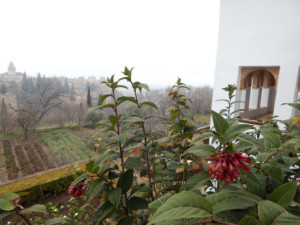
“Dale limosna, mujer, que no hay en la vida nada como la pena de ser ciego en Granada.”
“Give him an offering, my lady, for there is not a greater tragedy than that of a blind man in Granada.”
This saying is a famous quote that was allegedly said to a woman passing a blind beggar in the streets of Granada. The speaker was right—for hundreds of years, Granada’s grandeur has inspired poets, musicians and artists. It is a rare city that holds beauty in cada esquina (every corner), whether that be a fantastic backdrop of the Sierra Nevada mountains, the dazzling architecture of the Alhambra or the breathtaking vistas of the city. I visited there at the end of February, and I feel fortunate that I am able to go visit there again in a week.
To give a condensed history of Granada, it was once the Moorish capital of the Iberian peninsula (what we know today as Spain and Portugal), specifically during the Nazarí empire. During this time, the Moorish people constructed La Alhambra y El Generalife, which were the palace and gardens of the Moorish royalty, respectively. The Moorish empire fell to the Los Reyes Católicos (the Catholic King and Queen, Fernando and Isabella) on January 2, 1492. This was the final capture of the Reconquista, or the “conquering” of the Iberian Peninsula by the Catholic Monarchs.
Although I was only in Granada for 24 hours, I felt like I was able to do and see a lot. Here are some suggestions on what to do in Granada based on what I did during my trip:
Top things to do in Granada
1) Visit the Albayzín
To start our tour of the city, my program leaders took us on a walking tour through the Moorish Quarter of Granada. This part of the city is interesting because its streets are curved in such a way so that invaders would have difficulties rushing in; nowadays it’s very easy to get lost in. It also leads to the Plaza de San Nicolas, which is a must-see as it has amazing views of the Alhambra:
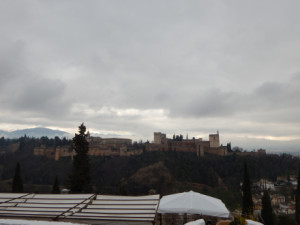
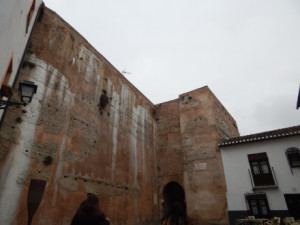
2) Get sweets from a monastery
If you have a chance, take the time to order sweets from a nun. It may sound strange, but it’s a Spanish tradition. My group and I approached the lazy Susan (a revolving door with a platform) and rang the bell. The nun greeted us in Spanish, and we replied with our order. A moment later the platform inside spun and two bags of muffins appeared. Doesn’t it sound fun?
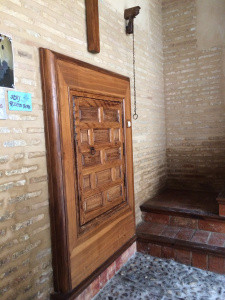
3) Visit the Cathedral and the Royal Chapel
As are many cathedrals in Spain, the one in Granada is breathtaking. The Royal Chapel is also worth viewing, as it is the final resting place of the famous Catholic monarchs Fernando and Isabella. With them is their daughter, Juana La Loca (the crazy one); Juana’s husband, Felipe El Hermoso (the handsome one); and their eldest grandson. Their tombs are intricately decorated and have many beautiful, interesting details. For example, Queen Isabella’s head sinks slightly lower into her “pillow” than her husband’s, suggesting that she knew more and had more power than he did. Queen Isabella was well-known for being powerful, in fact. It was she whom Christopher Columbus asked for permission to fund his voyages, not Fernando. If you want to literally get cryptic, below these gorgeous tombs you can peer into a window that looks into the resting place of the family. After studying Spanish history for a couple years now, it was really interesting to see these tombs. Los Reyes Católicos changed Spain forever, and I really believe the decoration on their tombs do their lives justice.
4) Tour the Alhambra and the Generalife
La Alhambra is arguably the most beautiful building I have ever visited. I am fascinated by Islamic architecture, and the Alhambra exemplifies many of its most beautiful stylistic commonalities.
In general, Islamic architecture tends to evoke nature. Many spots in both the Alhambra and the Generalife are characterized by water. This leads to magnificent reflections, intricate fountains and the soothing, musical sound of falling water.
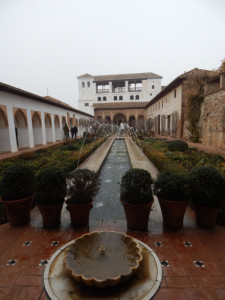
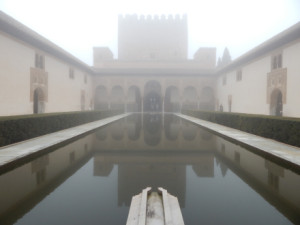
There is also a lot detalle (detail) within Islamic architecture. It often includes words in Arabic that praise Allah, and usually the designs are arranged using a mathematical form. The colors of the los azulejos and la cerámica (colored tiles and ceramics) are also designed using natural colors, including blue (water), green (earth) and yellow (sun).
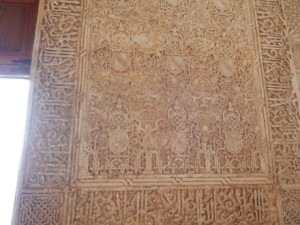
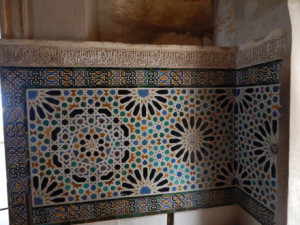
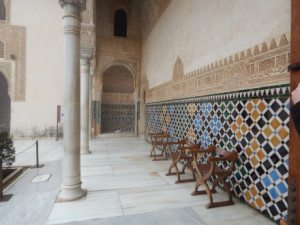
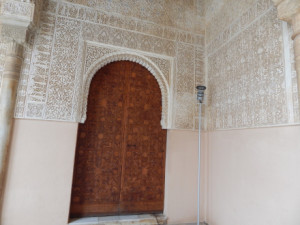
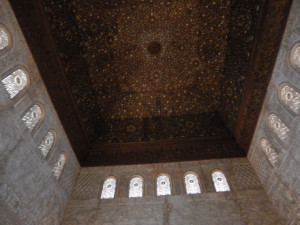
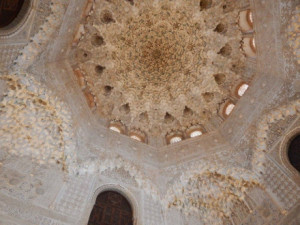
Lastly, the Alhambra has many towers which offer amazing views of the city, since the Alhambra is situated on top a hill (as are most Islamic palaces).
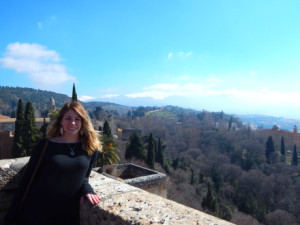
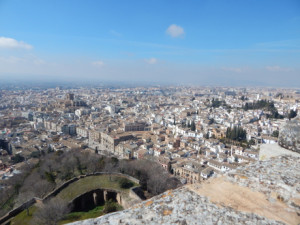
5) Go out for wine and tapas
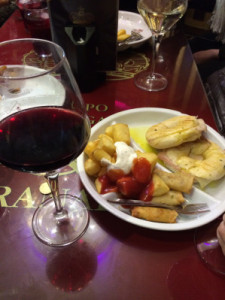
One amazing part about Granada is that you will never go hungry. There is a street called Calle Navas that is full of restaurants that offer free tapas with every drink you order. A group of friends and I went to several places, my favorite being La Bella y La Bestia (Beauty and the Beast). You don’t usually get to choose your tapa, but they’re different in every restaurant!
Lastly, in case you were wondering, granada translates to “pomegranates” in English. If you ever visit, you will see the “granadas” throughout the city!

